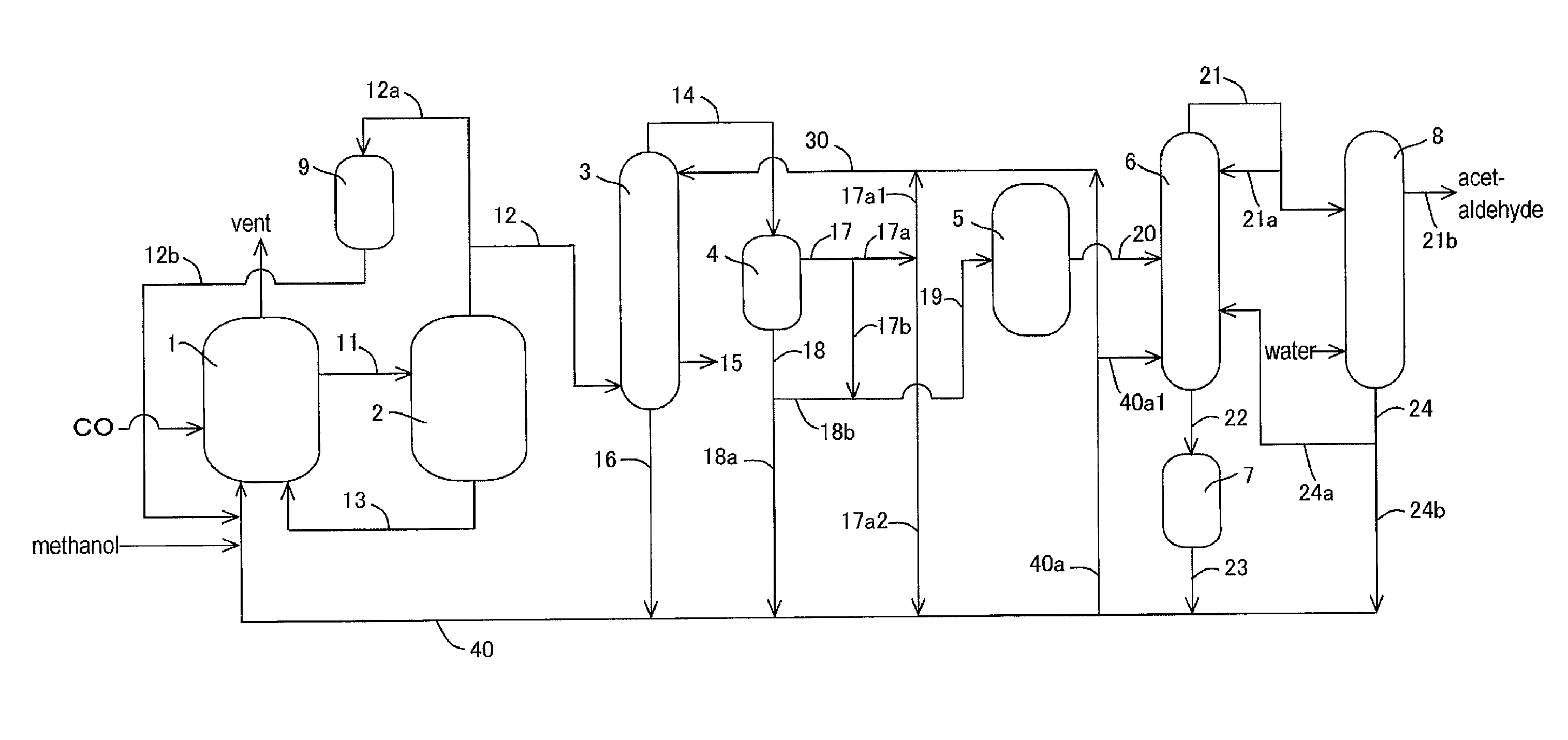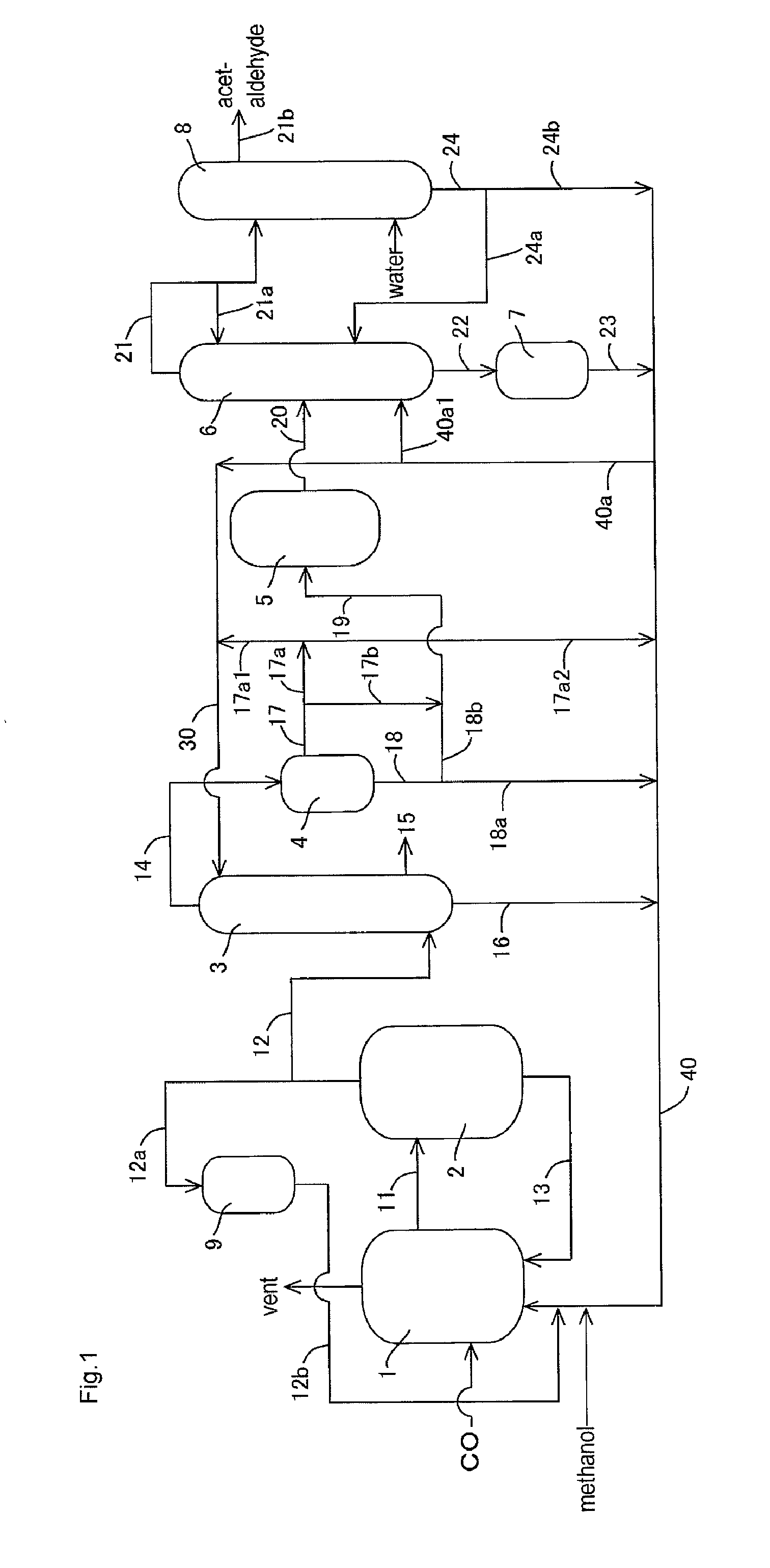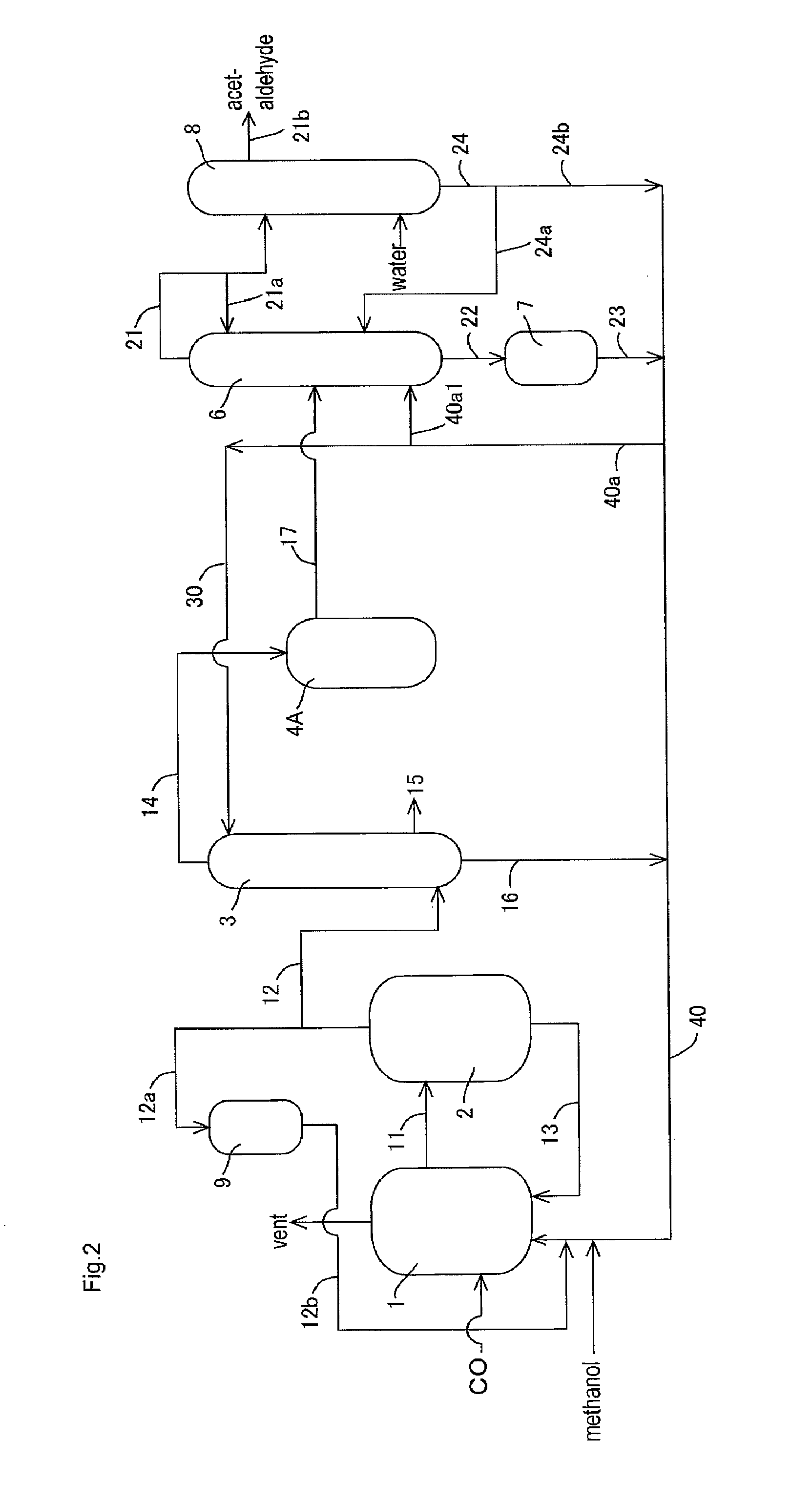Process for producing acetic acid
a technology of acetic acid and process, which is applied in the direction of carbon monoxide carbonate carboxylic preparation, organic compound preparation, organic chemistry, etc., can solve the problems of deteriorating product quality, affecting the quality of acetic acid, and impurities exerting bad influence, so as to achieve stably production and high purity, the effect of efficiently removing acetaldehyd
- Summary
- Abstract
- Description
- Claims
- Application Information
AI Technical Summary
Benefits of technology
Problems solved by technology
Method used
Image
Examples
example 1
[0149]In the apparatus (or process) of FIG. 1, acetic acid production process was carried out continuously as shown in FIG. 1 except that the lower boiling point component (3A) was fed to the acetaldehyde separation column 6 without going through the buffer tank 5. The detail of the process will be described below.
[0150]A liquid reaction medium had the following composition (or formulation): methyl iodide (13% by weight), water (8% by weight), methyl acetate (1.3% by weight), acetic acid (73.6% by weight), lithium iodide (5% by weight), and rhodium (800 ppm by weight). The liquid reaction medium was fed to the reactor 1, and the process was started. Throughout the process, the variation in the flow rate of the liquid reaction medium fed from the reactor 1 to the flasher 2 was in the range of about ±1.6% relative to the average flow rate. In the flasher 2, about 27% by weight of the total liquid reaction medium was fed to the splitter column 3 as the lower boiling point component (2A...
example 2
[0161]Example 2 was conducted in the same manner as in Example 1 except that part of the lower boiling point component (3A) discharged from the decanter 4 was recycled and that the rest was fed to the distillation column 6 in the process as described later.
[0162]With respect to the lower boiling point component (3A) of the upper layer, the proportion of the lower boiling point component (3A) fed to the line 19 (or the line 17b) was 0% by volume in the total lower boiling point component (3A) fed to the decanter 4 (that is, the lower boiling point component (3A) of the upper layer is wholly recycled without being fed to the line 19 or the line 17b); with respect to the lower boiling point component (3A) of the lower layer, the proportion of the lower boiling point component (3A) fed to the line 19 (or the line 18b) was 27% by volume (corresponding to 57% by volume of the whole lower layer) in the total lower boiling point component (3A) fed to the decanter 4.
[0163]That is, 27% by vol...
example 3
[0169]Example 3 was conducted in the same manner as in Example 1 except that part of the lower boiling point component (3A) discharged from the decanter 4 was recycled and that the rest was fed to the distillation column 6 in the process as described later.
[0170]In the same manner as in Example 1, the lower boiling point component (3A) was discharged from an upper part of the decanter 4 (a position corresponding to the upper layer) through the line 17 such that the liquid level and the interface level of the lower boiling point component (3A) to be held in the decanter 4 were maintained substantially constant (such that the fluctuation of the liquid level was about ±1% relative to the average liquid level and the fluctuation of the interface level (or the liquid level of the lower layer) was about ±1% relative to the average interface level). That is, the liquid level and the interface level of the lower boiling point component (3A) in the decanter 4 were maintained substantially co...
PUM
| Property | Measurement | Unit |
|---|---|---|
| volume ratio | aaaaa | aaaaa |
| partial pressure | aaaaa | aaaaa |
| partial pressure | aaaaa | aaaaa |
Abstract
Description
Claims
Application Information
 Login to View More
Login to View More - R&D
- Intellectual Property
- Life Sciences
- Materials
- Tech Scout
- Unparalleled Data Quality
- Higher Quality Content
- 60% Fewer Hallucinations
Browse by: Latest US Patents, China's latest patents, Technical Efficacy Thesaurus, Application Domain, Technology Topic, Popular Technical Reports.
© 2025 PatSnap. All rights reserved.Legal|Privacy policy|Modern Slavery Act Transparency Statement|Sitemap|About US| Contact US: help@patsnap.com



